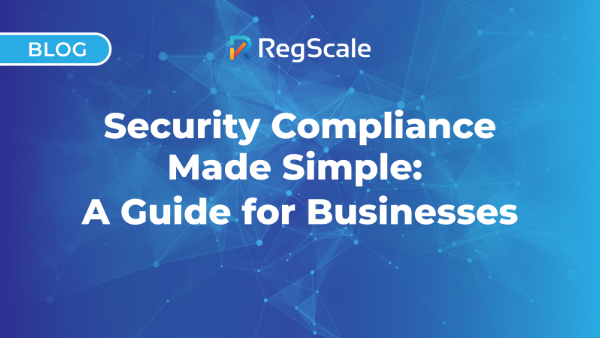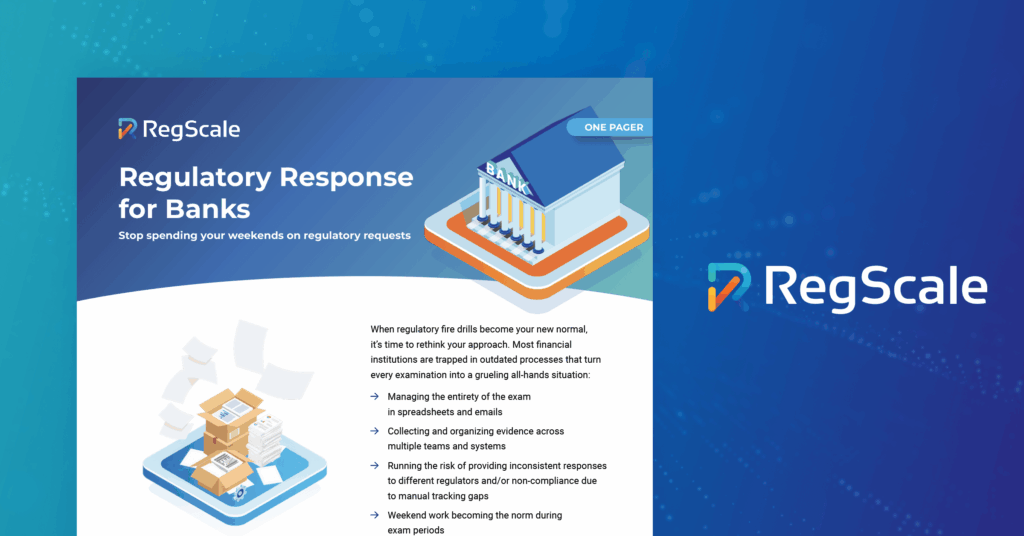Security Compliance Made Simple: A Guide for Modern Businesses

Let’s be honest: Security compliance isn’t exactly the most exciting topic in the boardroom or around the water cooler. But it’s absolutely critical for keeping your business safe, resilient, and legally compliant.
When done right, effective security compliance does more than just check boxes. It prevents those nightmare scenarios we’ve all heard about — costly penalties, devastating data breaches, and the kind of reputational damage that can take years to recover from.
Here’s what many businesses get wrong: they treat compliance like a one-time project. In reality, security compliance is an ongoing journey that involves continuous monitoring, regular auditing, and staying always audit-ready.
Today, we’ll explore the essential frameworks you need to know, practical implementation strategies that actually work, and how modern GRC platforms can transform your compliance efforts from a burden into a competitive advantage.
Understanding Security Compliance
At its core, security compliance is about ensuring your organization meets legal, regulatory, and internal requirements while managing the very real risks of data breaches and cyber threats that could devastate your business. It means implementing safeguards that protect information systems, prevent unauthorized access to customer data, stop data loss in its tracks, and prevent the misuse of your digital assets.
Security compliance encompasses a number of fundamental cybersecurity principles, from data confidentiality, integrity, and availability (the “CIA triad”) to continuous risk assessment and documentation. It also requires well-designed policies and reporting mechanisms to support consistent enforcement and continuous improvement.
An ongoing process, security compliance isn’t just about avoiding penalties — though that’s certainly important. It’s also about reducing vulnerabilities before they become problems and supporting the overall integrity of your operations. When you get both right, you’ve got a comprehensive strategy that protects your organization on multiple fronts.
Types of Compliance Standards You’ll Encounter
The compliance landscape can feel overwhelming, but standards generally fall into three main categories:
- Regulatory standards are the non-negotiables: laws you must follow based on your industry or the type of data you handle. To name a few, PCI DSS covers payment card data, CCPA protects California consumers’ data privacy, and FedRAMP sets the bar for cloud service providers working with federal agencies.
- Industry frameworks like the NIST RMF and ISO/IEC 27001 offer detailed guidelines for information security management. While these aren’t always legally required, they provide proven approaches to cybersecurity compliance that many organizations adopt voluntarily.
- Internal standards are the policies your organization creates to address specific operational risks and business goals. These standards generally complement external requirements while addressing the unique challenges your business faces.
The key is understanding that standards often overlap, but each will require distinct approaches depending on the scope and regulatory body involved.
International Regulations in a Global Economy
If your business operates globally or handles data from international customers, you’re likely dealing with regulations that cross borders and dictate data privacy practices worldwide. The European Union’s GDPR is probably the most well-known, enforcing rigorous privacy controls and granting individuals extensive rights over their personal data.
Other significant international regulations include Canada’s Personal Information Protection and Electronic Documents Act (PIPEDA) and China’s Personal Information Protection Law (PIPL). These laws require companies operating internationally to implement robust data governance frameworks and maintain transparent data handling procedures — often with mandatory reporting timelines and expensive penalties for non-compliance.
Industry Requirements You Can’t Ignore
Industry-specific cybersecurity and privacy regulations focus on practical controls that address the specific risks inherent to each sector, rather than applying broad, generic security measures that might miss critical vulnerabilities.
For instance, healthcare organizations must navigate strict protections around patient information from HIPAA (the Healthcare Insurance Portability and Accountability Act), while any business handling credit card transactions needs to comply with PCI DSS (Payment Card Industry Data Security Standard) requirements for data encryption, access management, and breach response.
Similarly, US federal agencies must comply with the Federal Information Security Management Act (FISMA) requirements for comprehensive risk management and continuous monitoring, and financial services organizations will typically have to follow the Gramm-Leach-Bliley Act (GLBA) to secure sensitive data and customer financial information.
Failure to meet these mandates can result in severe legal consequences, making adherence absolutely critical for organizations that interact with government entities or handle government data.
Implementing Security Compliance the Right Way
Effective security compliance requires a structured approach that addresses real threats, defines clear rules, educates your team, and keeps systems under constant review. The most successful organizations blend technical solutions with strong organizational practices to maintain regulatory alignment while actually protecting their assets.
Risk Assessment: Your Foundation
You can’t protect what you don’t know you have, so start by identifying vulnerabilities and cataloging your critical information systems and data. Evaluate risks based on likelihood and severity, considering both internal factors (employee access) and external threats (cyberattacks targeting your industry). Next, analyze regulatory requirements alongside actual business risks to ensure your compliance program aligns with the laws while also addressing operational goals.
Policy Development That Works
Your security policies must be practical and actionable, establishing clear guidelines for everything from data handling and authentication protocols to access controls, incident response, and service provider relationships. You’ll need to align policies directly with applicable regulations like GDPR, HIPAA, SOC 2, or PCI DSS — and make sure to involve legal, IT, and management teams for due diligence.
Employee Training: Your Human Firewall
Here’s an uncomfortable truth: employees are often your weakest security link, but they can also be your strongest defense when properly trained. Offer regular training sessions and ongoing education on compliance requirements, data privacy best practices, and recognizing social engineering attacks like phishing. Use realistic simulations when possible, and cover password hygiene, device handling, secure authentication practices, and incident reporting.
Continuous Monitoring: Staying Ahead of Problems
Continuous monitoring ensures that security controls work as intended by constantly collecting data and analyzing logs, system events, and network traffic to catch problems early. Automated monitoring tools are an essential part of continuous monitoring, helping to detect anomalies, policy violations, configuration changes, and potential breaches. This proactive approach enables swift response to risks and demonstrates accountability to auditors and stakeholders.
Overcoming Common Security Compliance Challenges
To be successful at security compliance, organizations must be skilled at navigating complex regulations, adapting to data security threats, and managing organizational processes efficiently. Cloud environments add another layer of complexity with rapidly changing configurations and the shared responsibility model — as do third-party relationships with service providers and vendors. Meanwhile, compliance teams often lack the resources to monitor controls continuously and respond effectively to emerging threats.
As a result, it’s common to struggle with the sheer complexity and sometimes conflicting requirements of regulations like GDPR, FedRAMP, or SOC 2. Luckily, automation and AI provide a way forward.
Leveraging Automation for Better Results
Automation tools help organizations manage cybersecurity compliance more effectively by reducing manual tasks, improving accuracy, and enabling faster response to potential issues. These tools enable continuous monitoring of systems and can flag potential violations and configuration changes promptly, often before they become serious problems.
Automated workflows can also improve efficiency significantly. The right tools will streamline your incident response, policy enforcement, and regulatory reporting, freeing up your staff to focus on strategic activities that require human judgment and creativity. Meanwhile, machine learning (ML) capabilities can detect anomalous behavior more quickly, helping you mitigate risks before they escalate into breaches or compliance failures.
In the end, the key is finding the right balance between automation and human oversight. Technology should enhance your compliance program, not replace the strategic thinking and decision-making that only people can provide.
RegScale for Security Compliance
RegScale’s platform automates many of the time-consuming manual processes that bog down compliance teams, from continuous monitoring and risk assessments to audit prep and regulatory reporting. The platform also provides real-time visibility into your compliance status across multiple frameworks — whether you’re dealing with SOC 2, CMMC, FedRAMP, ISO, or any combination of standards.
Thanks to seamless integrations, automated evidence collection, and the ability to 10x staff, your team can focus on strategic security initiatives rather than getting buried in documentation and manual compliance tasks. With RegScale, security compliance becomes a manageable, integrated part of your business operations rather than a constant source of stress and resource drain.
Ready to learn more? Book a call with us here.
Ready to get started?
Choose the path that is right for you!
Skip the line
My organization doesn’t have GRC tools yet and I am ready to start automating my compliance with continuous monitoring pipelines now.
Supercharge
My organization already has legacy compliance software, but I want to automate many of the manual processes that feed it.
